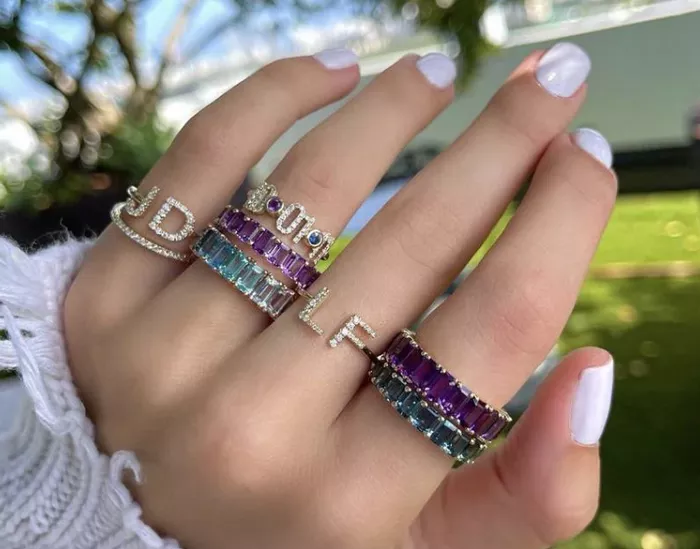Choosing an engagement ring is a deeply personal decision, influenced by factors ranging from aesthetics and symbolism to practical considerations like durability and maintenance. Among the various choices available, the type of gold used for the ring is a critical aspect that can significantly impact its appearance, longevity, and value. Gold, admired for its beauty and versatility, comes in several different varieties, each with its own unique characteristics. This article delves into the qualities of different gold types—yellow gold, white gold, rose gold, and platinum—to help you make an informed decision on what is truly the best gold for your engagement ring.
Understanding the Types of Gold
Gold, in its purest form, is too soft for everyday wear, making it impractical for jewelry such as engagement rings. To increase its strength and durability, gold is often alloyed with other metals, which also affects its color. Here are the primary types of gold used in engagement rings:
1. Yellow Gold
Yellow gold is the most traditional and classic choice for engagement rings. It is typically alloyed with metals like copper and zinc to increase its strength. The purity of yellow gold is measured in karats (k), with 24k being pure gold. Commonly used karatages for yellow gold engagement rings are 18k (75% gold) and 14k (58.3% gold).
Properties of Yellow Gold:
Warm and Lustrous: Yellow gold’s natural color exudes warmth and richness that complements various skin tones.
Timeless Appeal: Its traditional hue has symbolized luxury and commitment for centuries.
Durable: 18k and 14k yellow gold are durable enough for everyday wear, making them suitable for engagement rings.
Care: Requires periodic cleaning and maintenance to retain its luster.
2. White Gold
White gold has grown in popularity for engagement rings due to its contemporary look and ability to complement diamonds and other gemstones. It is created by alloying yellow gold with white metals such as nickel, palladium, or silver, and then rhodium-plated to achieve a bright, white finish.
Properties of White Gold:
Modern Aesthetic: Its silvery-white appearance provides a sleek and modern alternative to traditional yellow gold.
Versatility: White gold pairs well with various gemstones and settings.
Strength: Alloyed with durable metals, making it suitable for everyday wear.
Maintenance: Requires occasional re-plating with rhodium to maintain its white color and shine.
3. Rose Gold
Rose gold, also known as pink or red gold, has gained popularity in recent years for its romantic and vintage appeal. It is created by alloying gold with copper, which gives it a warm, blush hue.
Properties of Rose Gold:
Romantic and Feminine: Its unique color evokes a sense of romance and elegance.
Complementary: Flatters a wide range of skin tones.
Durability: Copper alloy provides strength, although 18k rose gold is softer than 18k yellow or white gold.
Care: Requires regular cleaning and maintenance to preserve its color and luster.
4. Platinum
While not technically gold, platinum is a precious metal often chosen for engagement rings due to its rarity, durability, and hypoallergenic properties. Platinum engagement rings are typically 95% pure platinum, making them more expensive than gold options.
Properties of Platinum:
Durability: Extremely strong and durable, ideal for holding precious gemstones securely.
Hypoallergenic: Suitable for those with sensitive skin.
Natural White Color: Does not require rhodium plating like white gold to maintain its color.
Weight: Heavier than gold, providing a substantial feel.
See Also: Are Colored Engagement Rings Tacky?
Factors to Consider When Choosing Gold for an Engagement Ring
1. Personal Style and Preference
Your personal taste and style play a significant role in determining the best gold for your engagement ring. Consider whether you prefer a classic, timeless look (yellow gold), a modern and sleek appearance (white gold), or a romantic and unique aesthetic (rose gold).
2. Skin Tone
Different gold colors complement various skin tones. For example, yellow gold tends to look particularly flattering on warmer skin tones, while white gold and platinum can complement cooler skin tones. Rose gold, with its warm undertones, often suits a wide range of skin colors.
3. Lifestyle and Durability
Consider your lifestyle and how it might impact the choice of gold for your engagement ring. If you lead an active lifestyle or work with your hands frequently, you may want to opt for a more durable metal like 18k gold or platinum, which can withstand daily wear and tear better than softer metals.
4. Maintenance Requirements
Each type of gold has its own maintenance requirements. While yellow gold and rose gold may require periodic cleaning and polishing to maintain their luster, white gold needs additional upkeep due to its rhodium plating, which wears off over time and requires re-plating.
5. Budget
Your budget will also influence the type of gold you choose for your engagement ring. Generally, platinum is the most expensive option due to its rarity and density, while 14k gold is more affordable but still offers durability and beauty.
Conclusion
Choosing the best gold for your engagement ring involves considering a variety of factors, from personal style and skin tone to durability and budget. Whether you opt for the classic warmth of yellow gold, the modern appeal of white gold, the romantic hue of rose gold, or the luxury of platinum, each type of gold offers its own unique attributes that can enhance the beauty and significance of your engagement ring. By understanding the properties and characteristics of each gold type, you can make an informed decision that reflects your personal preferences and ensures that your engagement ring remains a cherished symbol of love and commitment for years to come.

